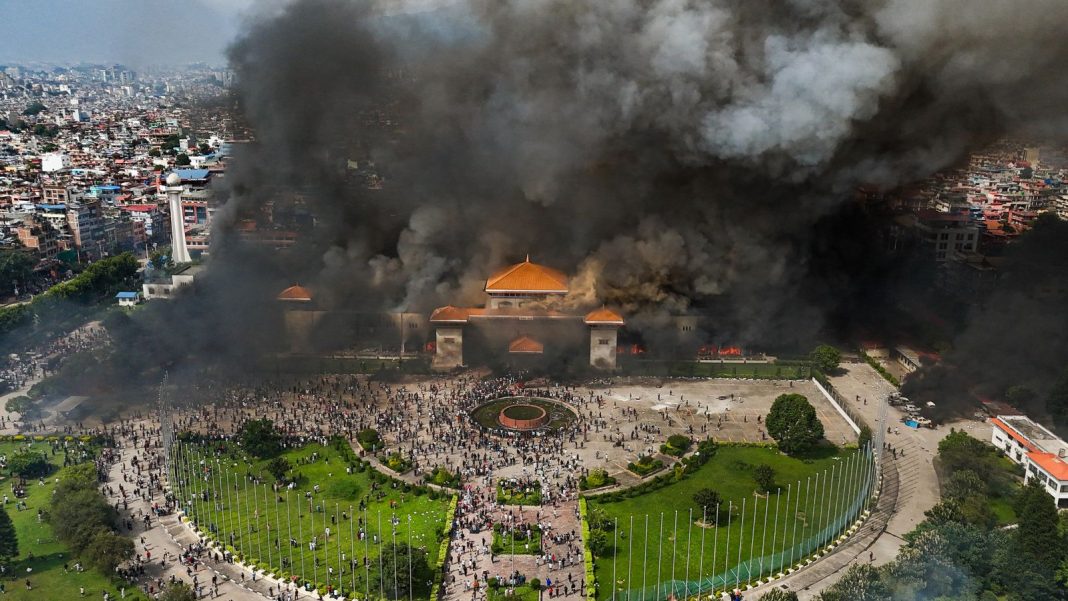Nepal, a nation sharing deep cultural, historical, and economic ties with India, finds itself grappling with renewed social unrest as widespread protests, primarily led by its energetic Gen Z population, have erupted across major cities. The demonstrations, which began peacefully but have rapidly escalated, prompted the Nepalese government to impose a strict curfew in several key urban centres, including parts of the capital, Kathmandu. This latest wave of protests underscores a recurring pattern of youth discontent, posing significant challenges to the country’s stability and drawing keen observation from its neighbours, especially India.
The Spark Ignites Again
The immediate trigger for the current protests appears to be a controversial infrastructure project, the ‘Himalayan Connectivity Corridor’, which has been marred by widespread allegations of corruption, environmental damage, and forced land displacement. Young Nepalis, many of whom have grown up in a post-monarchy era characterized by political flux, view this project as emblematic of deeper governance failures and a persistent lack of accountability among the political elite. Social media platforms, particularly TikTok and X (formerly Twitter), have become powerful tools for organization and mobilization, allowing these digitally native protesters to quickly disseminate information and call for action.
Protests began in Kathmandu’s
A Pattern of Discontent: What Fuels Nepal’s Youth?
While the immediate trigger is specific, the underlying causes of Gen Z’s repeated eruptions of anger are multifaceted and deeply rooted. Nepal has witnessed frequent changes in government and political instability since the end of the civil war and the abolition of the monarchy. This prolonged period of political uncertainty has often hindered sustainable economic development and good governance. The youth, who constitute a significant portion of the population, face immense challenges: high unemployment rates, limited economic opportunities, and a prevailing sense of disillusionment with traditional politics.
For a generation connected globally, the stark contrast between their aspirations and the realities of their homeland often fuels their activism. They demand not just jobs, but also a voice in governance, an end to corruption, and policies that address climate change and social equity. This frustration is palpable, and as one young protester, Asha Rai, a 22-year-old university student in Kathmandu, eloquently stated amidst the tear gas, “We are not protesting for fun. We are protesting for our future, for a Nepal that works for everyone, not just a select few who benefit from corruption.”
From an Indian perspective, Nepal’s enduring stability is paramount. The extensive open border, shared cultural heritage, and deep people-to-people connections mean that unrest in Nepal often has implications for India. A stable and prosperous Nepal is crucial for border security, trade relations, and overall regional peace. Therefore, the recurring youth-led protests, signaling deep-seated grievances, are watched with concern by New Delhi, which advocates for peaceful dialogue and democratic resolution.
The Road Ahead: Challenges and Regional Implications
The Nepalese government faces a delicate balancing act. While maintaining law and order is crucial, a heavy-handed approach risks further alienating the youth and exacerbating the situation. There is an urgent need for the government to engage in meaningful dialogue with protest leaders and address their core grievances, rather than simply imposing restrictions. Sustainable solutions will likely require comprehensive reforms in governance, greater transparency, and concrete steps to create economic opportunities for young people.
The ongoing protests also have significant economic repercussions, particularly for Nepal’s crucial tourism sector, which is still recovering from the pandemic. Prolonged instability could deter foreign investment and further cripple the economy, creating a vicious cycle of discontent. For India and other regional partners, the hope is for Nepal to find a path toward genuine reconciliation and stability. The vibrant energy of Nepal’s Gen Z, if channeled constructively, could be a powerful force for positive change, but if ignored, it could continue to be a source of volatility for the Himalayan nation.
As the curfews hold and the future remains uncertain, the situation in Nepal serves as a poignant reminder of the aspirations of a generation seeking a better tomorrow, and the complex challenges faced by democratic governments in addressing the demands of their youth in an increasingly interconnected world.




